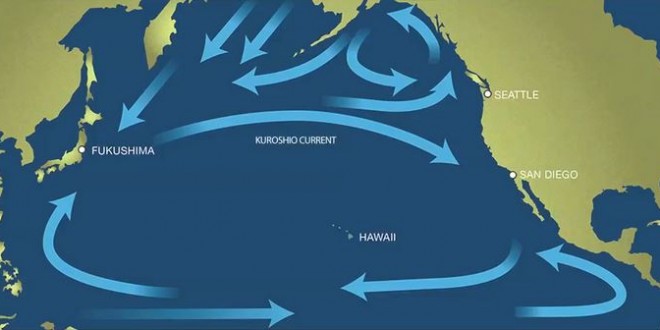A NOVA SCOTIA research scientist has told a scientific conference that isotopes for cesium-134 and cesium-137 have been identified west of Vancouver.
John Smith, who is with the Canadian government’s Bedford Institute of Oceanography, told the American Geophysical Union meeting in Honolulu that levels are far lower than the Canadian limit for drinking water, according to a story on LiveScience.com.
Smith explained that cesium-134 has a half-life of two years, making it an “unequivocal” indication of ocean contamination from the Fukushima nuclear disaster, which occurred after an earthquake on March 11, 2011 in northeastern Japan.
According to the WHOI plume prediction, Fukushima radionuclides will reach Alaska and British Columbia in early 2014, traveling south along the coast over the course of two years with trace amounts arriving in Hawaii. WHOI says the levels will be below the safety limit set by the U.S. Environmental Protection Agency. The EPA limit for cesium-137 in drinking water is 7,400 Becquerels, the radioactive decay per second, per cubic meter.
Buesseler said in a statement, “We expect over the rest of 2014, levels will become detectable starting first along the northern coastline. But the complex behavior of coastal currents will likely result in varying intensities and changes that cannot be predicted from models alone.”
The radioactive plume has not reached the United States coast yet and experts believe the radiation levels will not pose a threat to humans or to marine life. The San Francisco Chronicle reports that, based on ocean circulation patterns, the first traces of the Fukushima radiation plume will be seen in April.
Agencies/Canadajournal
 Canada Journal – News of the World Articles and videos to bring you the biggest Canadian news stories from across the country every day
Canada Journal – News of the World Articles and videos to bring you the biggest Canadian news stories from across the country every day



